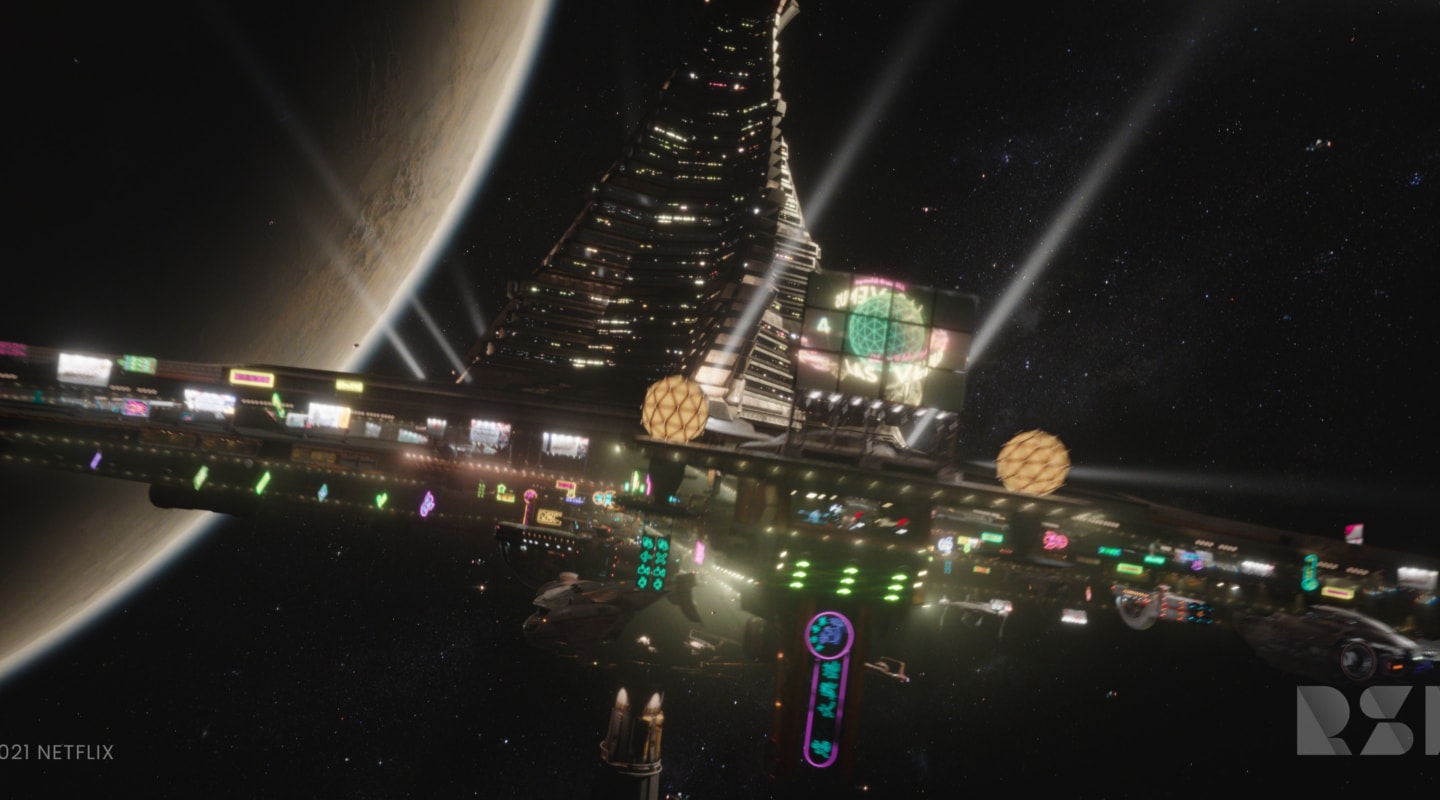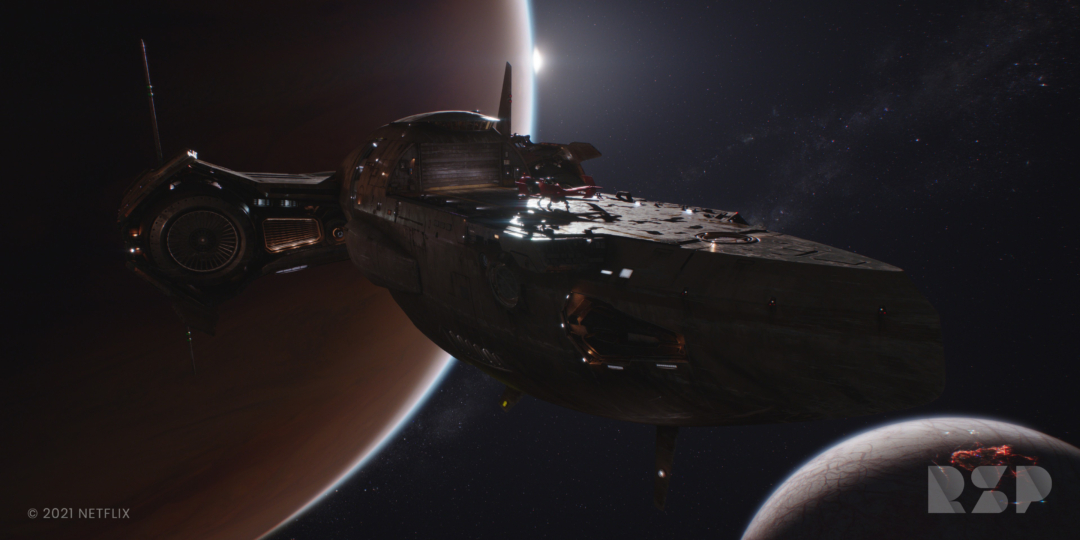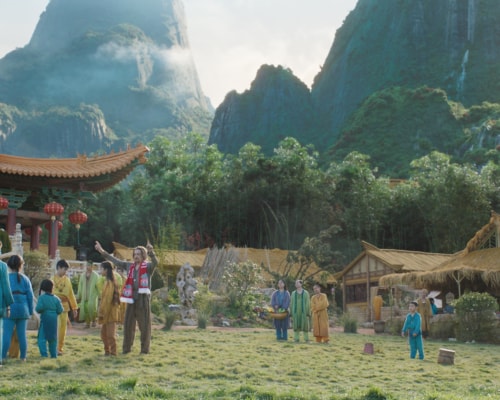COWBOY BEBOP
Rising Sun Pictures Delivers Breathtaking VFX for Netflix’s Live Action ”Cowboy Bebop”
PLAY
REEL
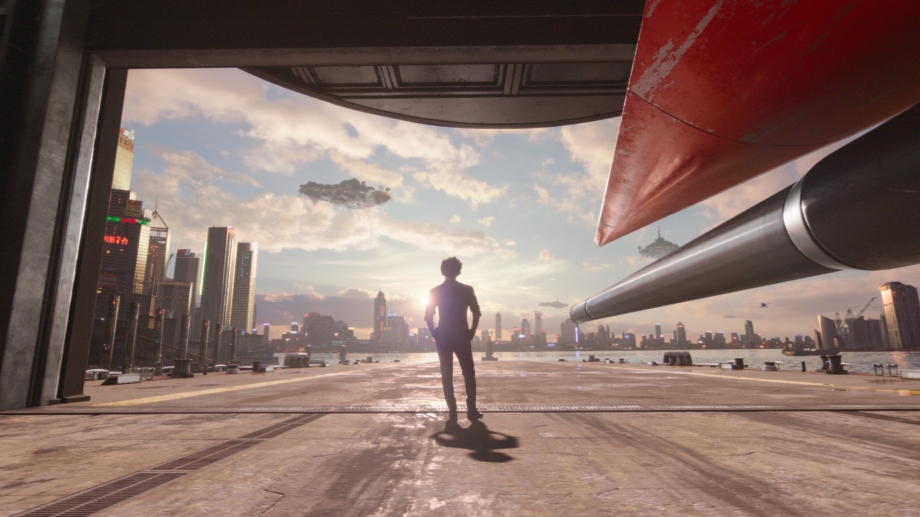
Rising Sun Pictures was a key visual effects supplier for Cowboy Bebop, Netflix’s spirited live-action adaptation of the genre-bending anime classic about a ragtag group of bounty hunters in pursuit of the solar system’s most dangerous criminals. The studio contributed to more than 40 VFX sequences across the show’s ten episodes, including scenes involving the Bebop spaceship, Spike Spiegel’s Swordfish II fighter, the ‘Las Venus’ Casino and the hyperspace travel device known as the Astral Gate.
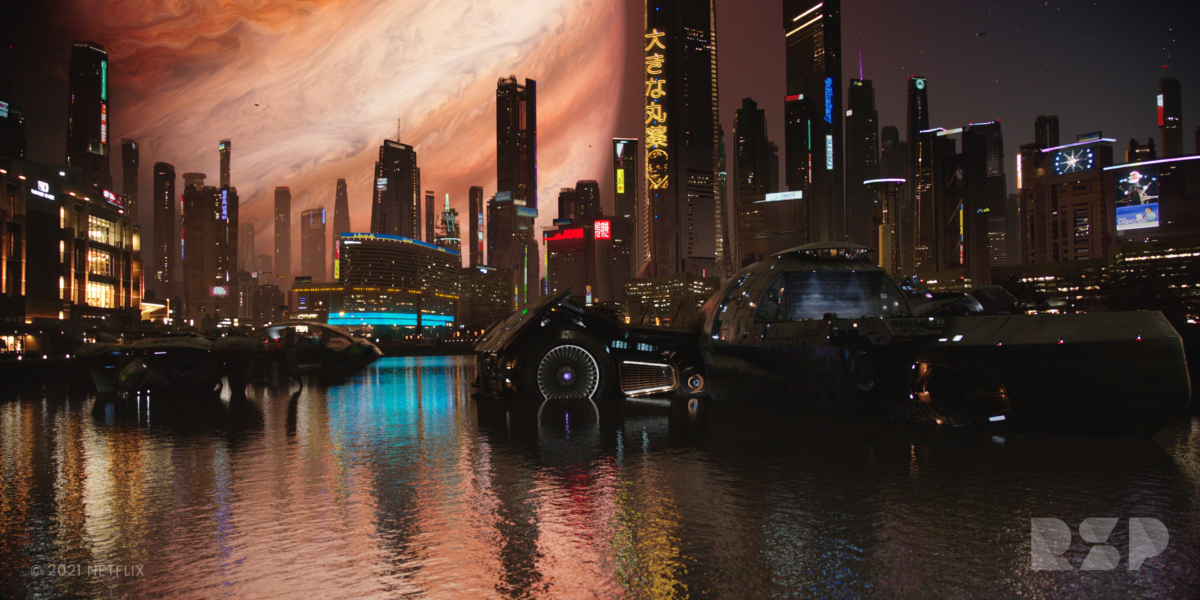
RSP’s team was led by VFX Supervisor Marc Varisco, CG Supervisor Bhakar James, Compositing Supervisor Tony Cole, VFX Producer Ian Cope and Executive Producer Meredith Meyer-Nichols. They worked closely with the Netflix production team VFX Supervisor Victor Scalise and VFX Producer Scott Ramsey, in crafting visuals that capture the unique dystopian vibe of the anime original and take it into a luminous, live-action world. “Cowboy Bebop has millions of diehard fans who have been waiting eagerly for this new series,” Meyers-Nichols says. “They have very high expectations, and we gave an all-out effort to ensure they are not disappointed.”
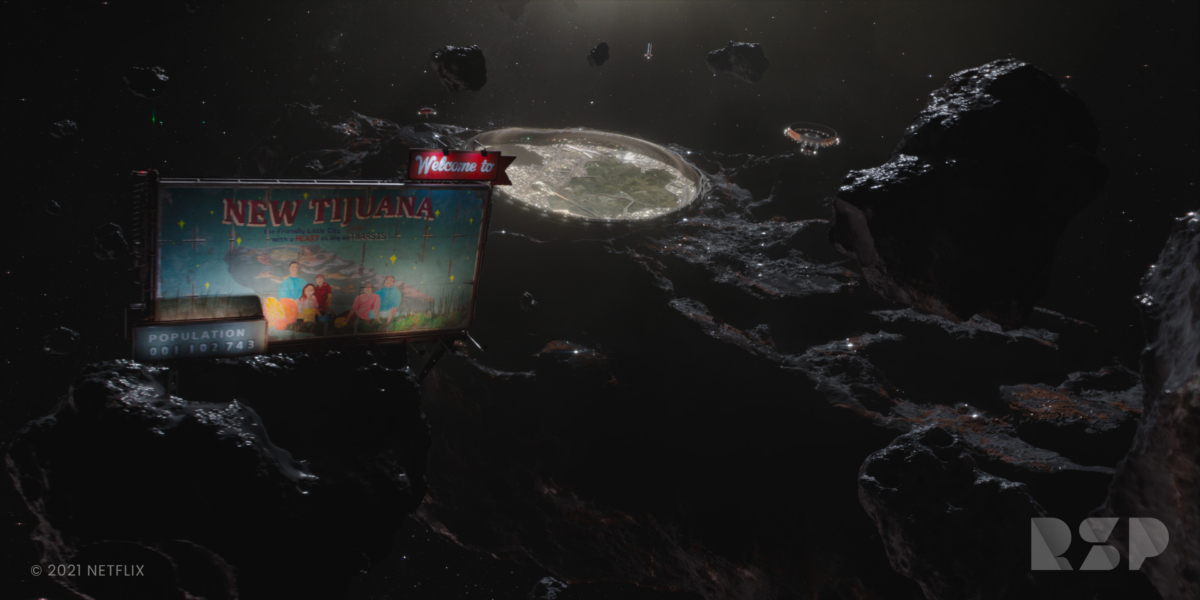
The Netflix production team were impressed with the work that RSP produced for the series.
"RSP did an amazing job at bringing their creative excellence to Cowboy Bebop. I was blown away at how beautiful the concept art was and how many high-quality shots they were able to produce within such tight deadlines. It was an absolute pleasure working with Marc and the team to design shots and sequences. Their attention to small details was spectacular and they really added to the success of Cowboy Bebop's VFX". Production VFX Supervisor, Victor Scalise.
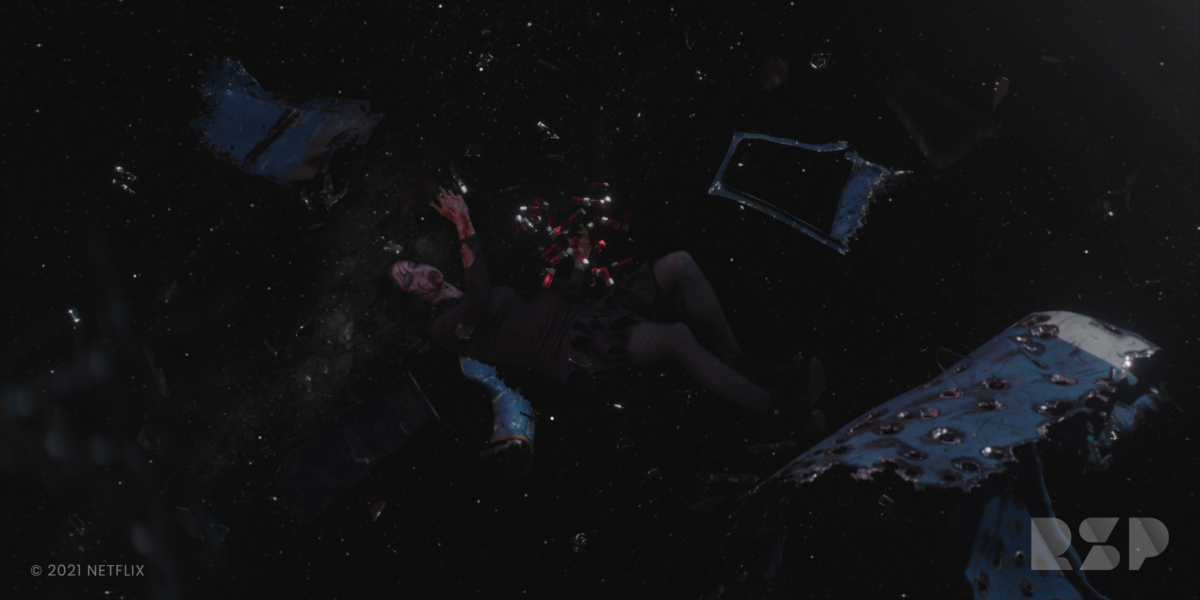
One of the most ambitious sequences undertaken by RSP appears early in the first episode as Spike Spiegel (John Cho) lifts off the Bebop in his Swordfish II and soars over a futuristic metropolis on the planet Venus. Except for Spike himself, the sequence is almost entirely CG with RSP designing and creating parts of the Bebop, the Swordfish, and the surrounding cityscape. “The Bebop ship is based on its anime counterpart but underwent numerous iterations to fine tune its features and ensure they function in a realistic manner,” notes Varisco. “It’s a spaceship that’s capable of landing on land and water. It’s the size of an aircraft carrier with a flight deck and a rotating garage to accommodate small aircraft.”
COWBOY BEBOP
The Venetian city environment is dazzling, with rows of skyscrapers lining a waterfront bathed in sparkling sunshine. “It’s a big reveal with the city appearing as the hangar door of the Bebop lifts up,” says James. “The city is reminiscent of New York in size and scope, but the architecture has a Turkish aesthetic, and we added a Bebop flair through billboards, floating islands and other features.
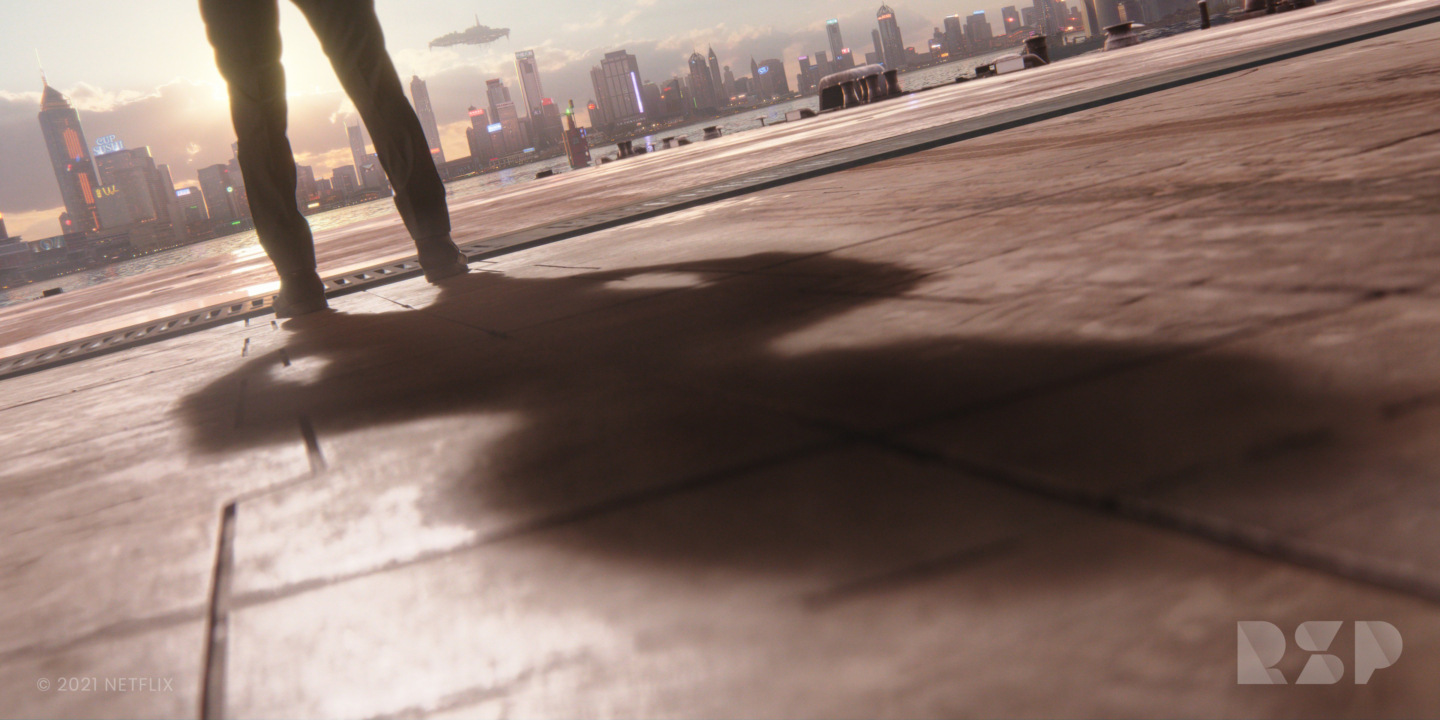
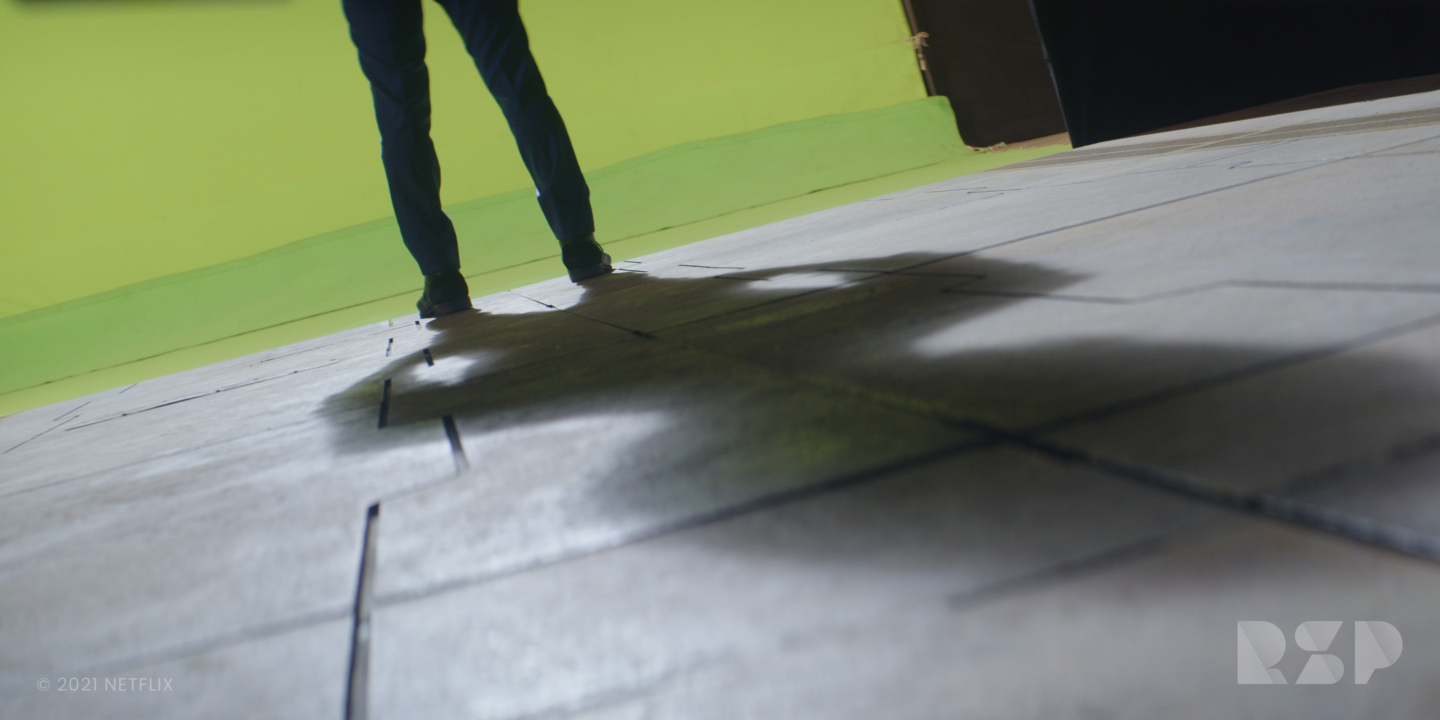
RSP artists turned Spike’s flying sequence into a heart-pounding aerial ballet. “It’s an homage to Top Gun and other films of that action genre,” notes Cole. “We added dynamic camera movement, turbulence, smoke and jet flares to increase drama and create the feel of being in the cockpit. It’s an awesome sequence.”
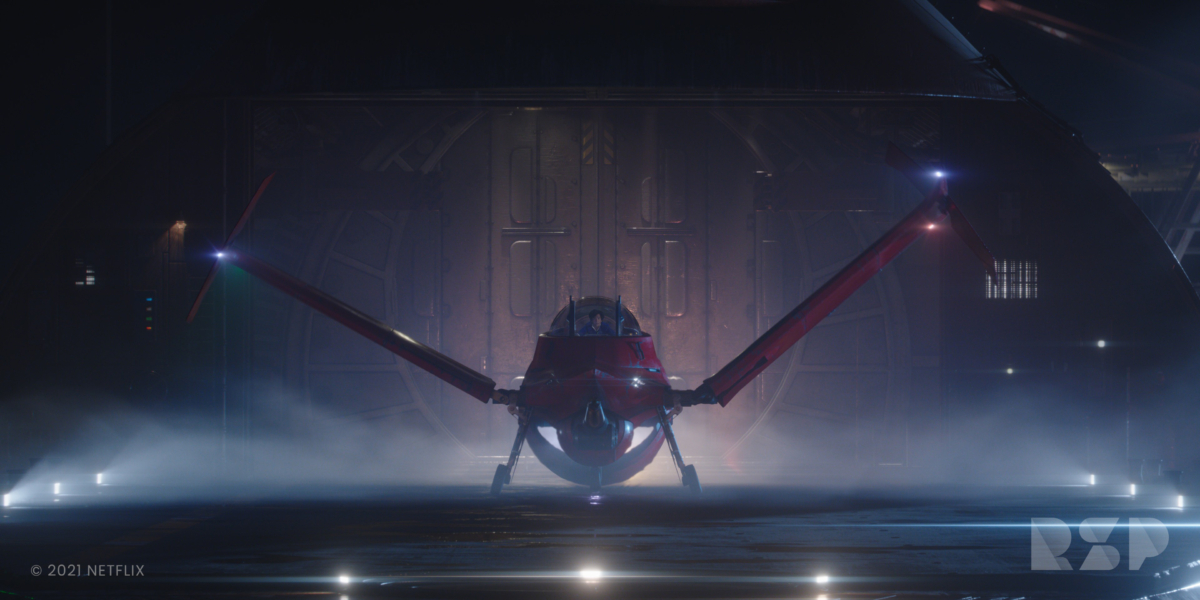
The scene includes several close-ups showing Spike at the controls of the ship. “One of our lead compositors came up with a technique in Nuke that could be used to reflect any surface onto the glass of the cockpit with the correct refraction, reflection and distortion,” notes Cole. “It was incredibly useful in placing Spike inside the ship and tying it to the exterior environment.”
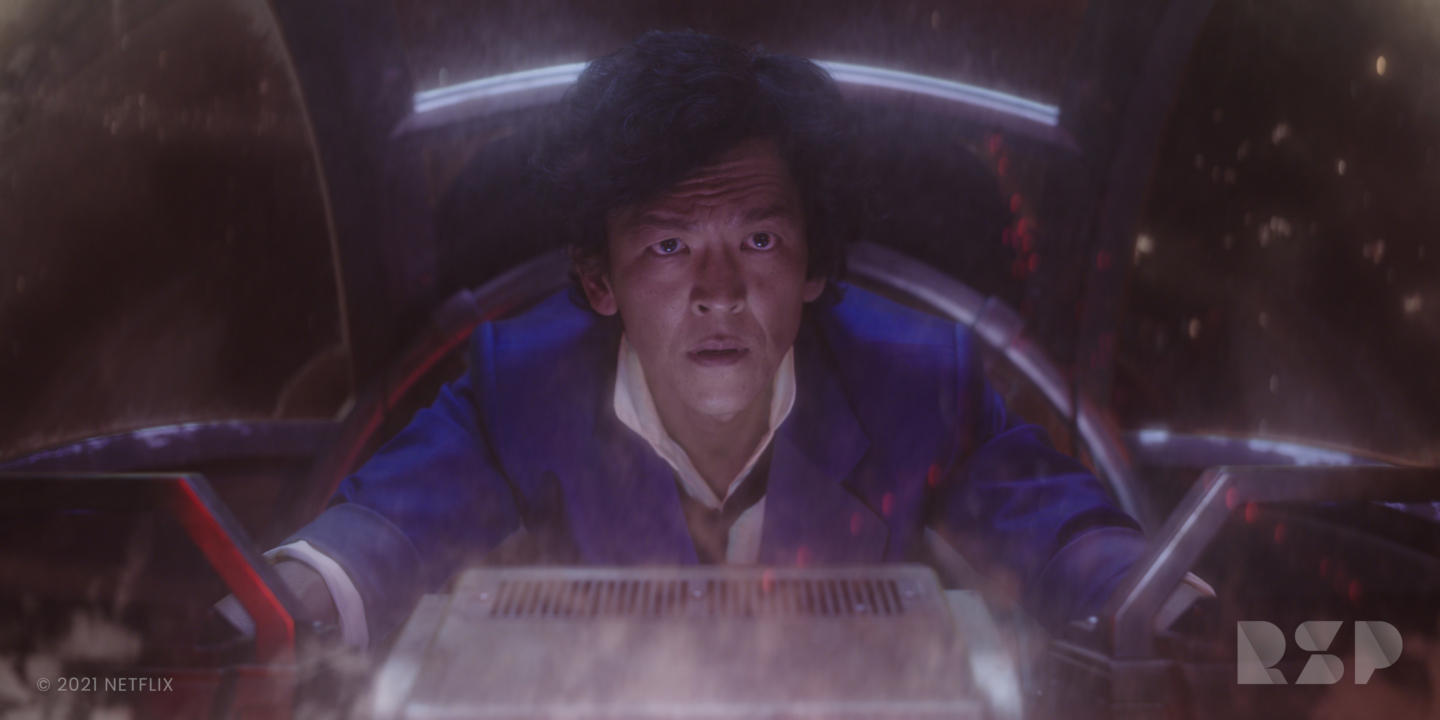
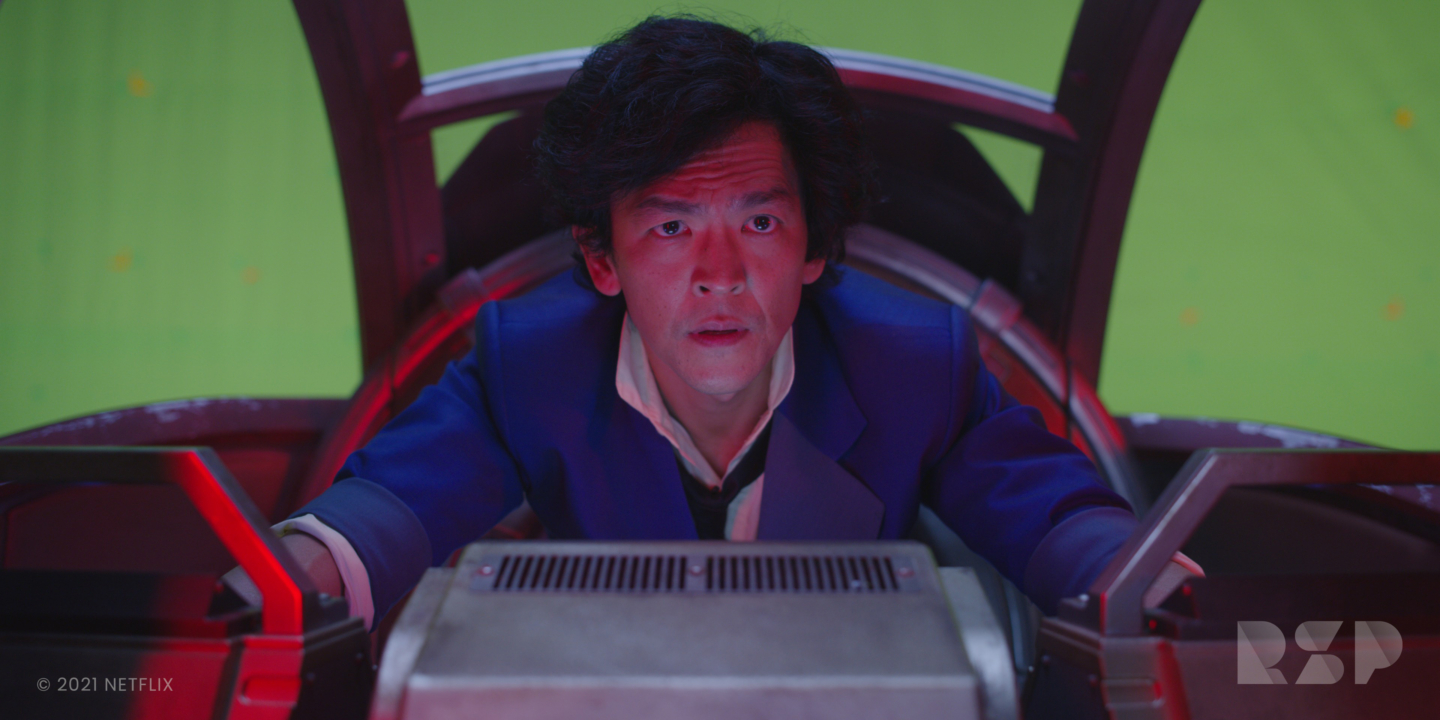
Another memorable scene is set on the Space Station Casino Las Venus orbiting in space and surrounded by a huge, holographic roulette wheel.. Gambling activity is interrupted when a gunfight breaks out. Shots are fired, the side of the casino is breached, and a dying man is sucked into space. From that point forward, the shot is fully CG. “We follow the man’s body as it floats out into space, gradually revealing the exterior of the casino,” explains Varisco. “The body eventually loses its moisture, crystalises and disappears.”
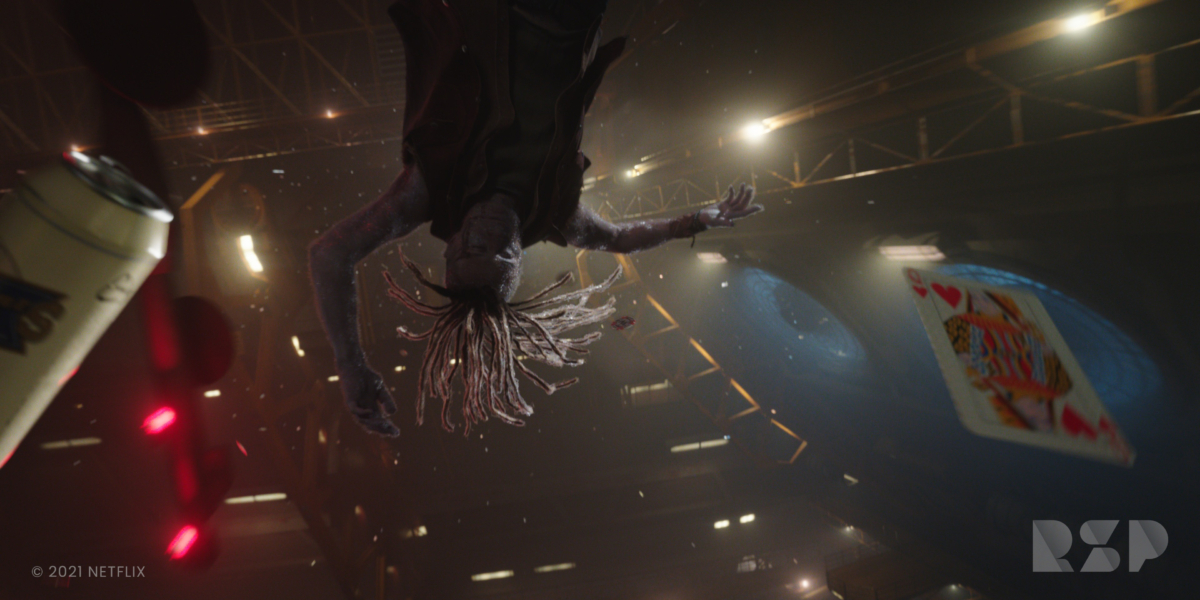
The exterior space shot includes the casino as well as numerous tiny spacecraft flying into and out of its port. Cole explains that the shot was massive, involved complex choreography, and was made more complicated by the fact that it was finished near the end of production. “We had one chance to render the whole shot at 4K resolution,” he recalls. “With the deadline approaching, we put out comps in small bits as 3D passes and, as they came off the farm, we blended them in. It worked like a treat; the shot looks fantastic.”
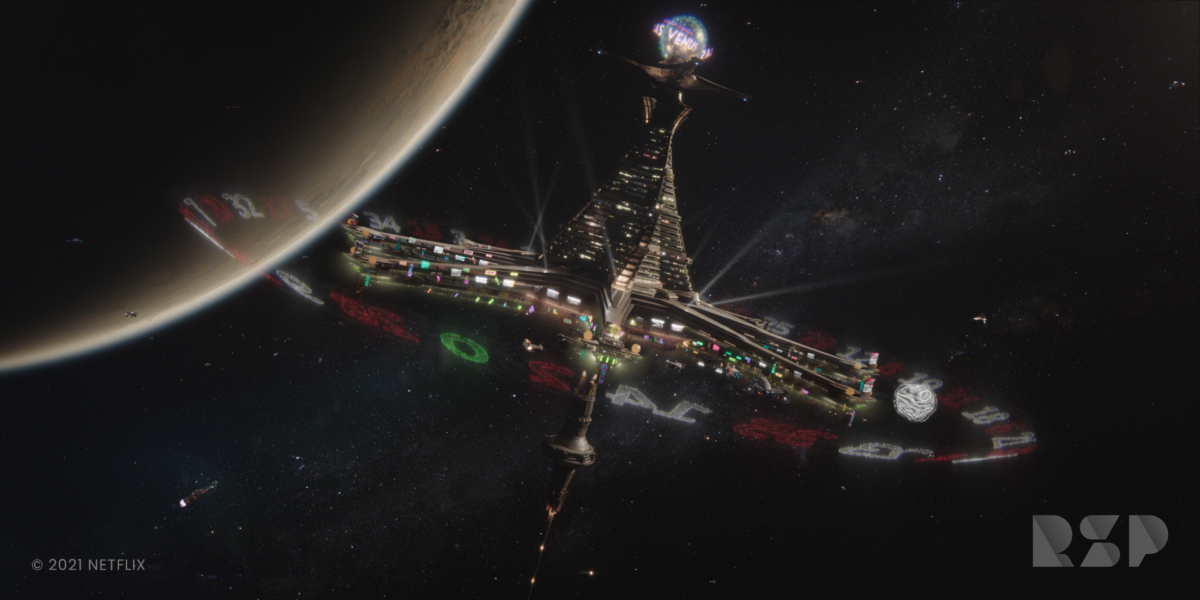
RSP again took its cues from the anime artwork in designing the Astral Gate, a huge, circular portal that, for the price of a toll, allows spacecraft to move through hyperspace within the solar system. Varisco explains that the team not only worked to reproduce the look of the gateway but also to develop a rational method for how it functioned both from the perspective of real-world physics and within the idiosyncratic Bebop universe. “The Gate has an arrival and departure mechanism where ships, entering the flow go through accelerator rings and then decelerate as they approach their destination,” he says.
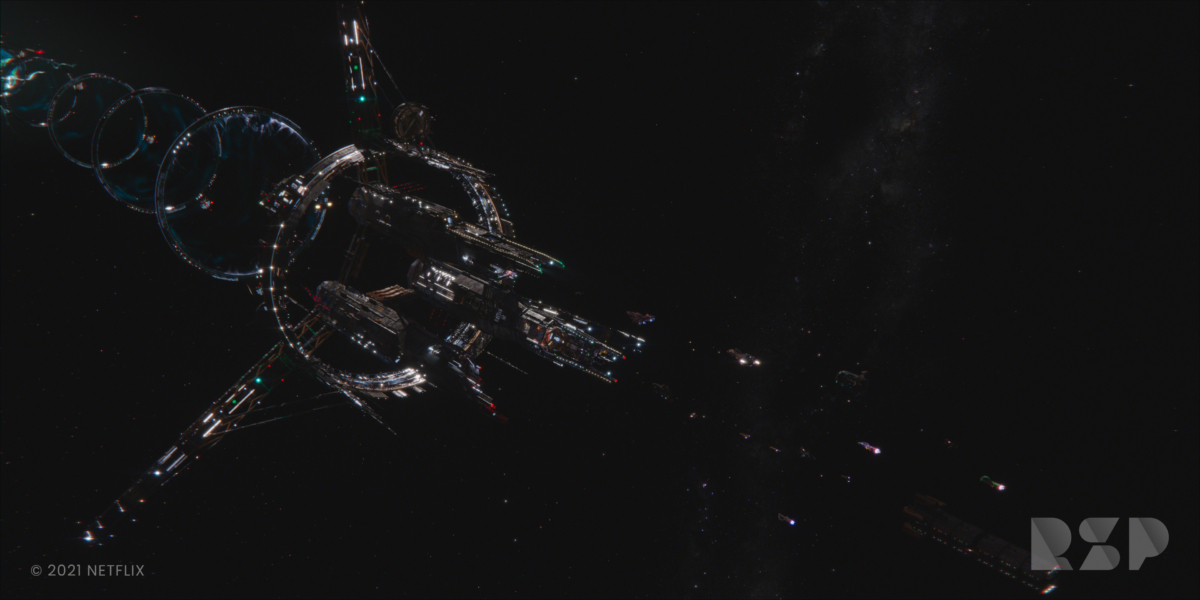
“The interior of the Gate is a vast wormhole transport system,” adds James. “It has various routes and is heavily trafficked by different sorts of spacecraft. It’s unusual, unlike anything you’ve seen before, a pretty cool piece of tech.” The client was thrilled with the result. "The Astral Gates are fairly simple objects and RSP were able to bring a lot of life into them. There are so many details added into the rigs that really help give them mass and scale," says Scalise.
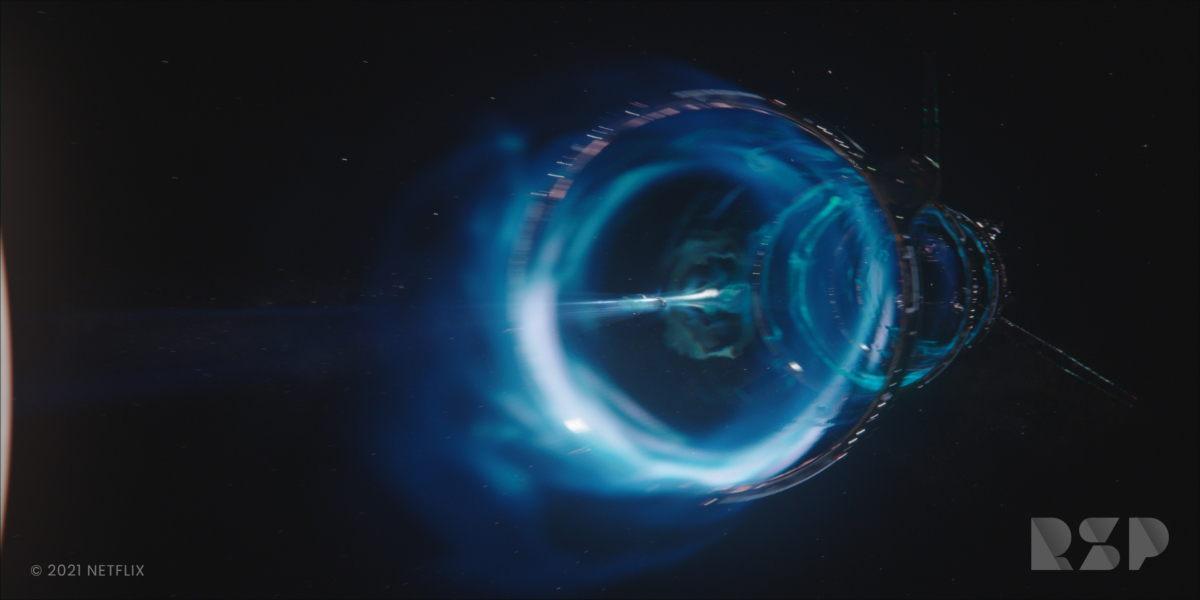
Other sequences completed by RSP include a confrontation over the dilapidated Martian theme park Space Land, and a chase scene near the asteroid colony New Tijuana. Cole says that the scope of the project demanded tight coordination across departments at the studio. “Our 2D and 3D people worked together to solve issues as they arose,” he recalls. “Given the time constraints we needed to be smart and fast about finding and applying solutions.”
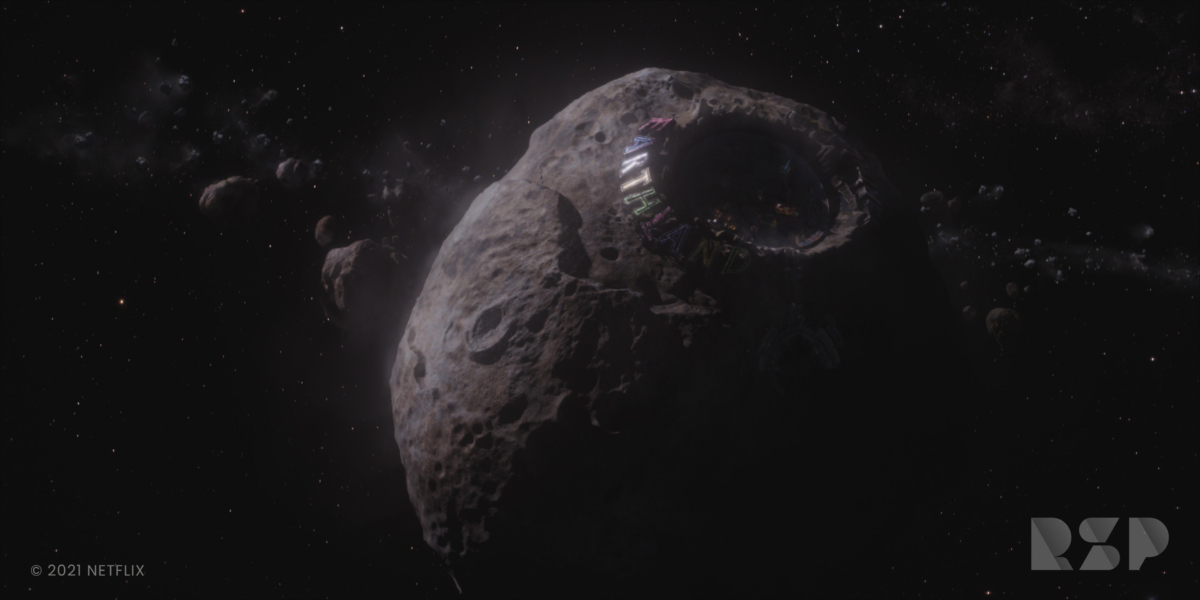
James adds that the project was unusually demanding in part because the effects were both extravagant and varied. “There were a lot of bespoke effects that were required for a particular shot and never seen again,” he says. “Yet they had to be designed and executed with the same creativity and attention to detail as an effect that will be used across multiple shots.”
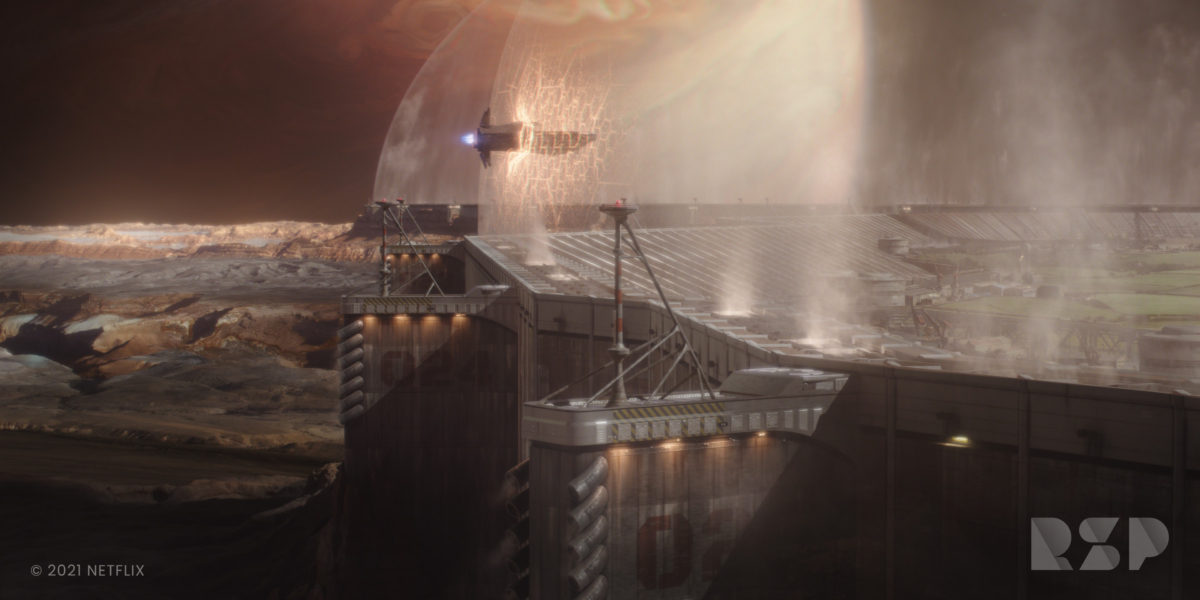
RSP has improved workflow efficiency and developed rendering strategies to seamlessly manage large volumes of 4K media required by Cowboy Bebop and many other current projects. It also has a veteran team of artists, many of whom have been with the studio for years, who have learned how to boost productivity while maintaining artistic integrity. “We set the bar very high,” insists Cope. “We don’t employ any shortcuts or hacks. Our background is in tentpole features where high-quality work is essential; The expectations for Cowboy Bebop are even greater.”
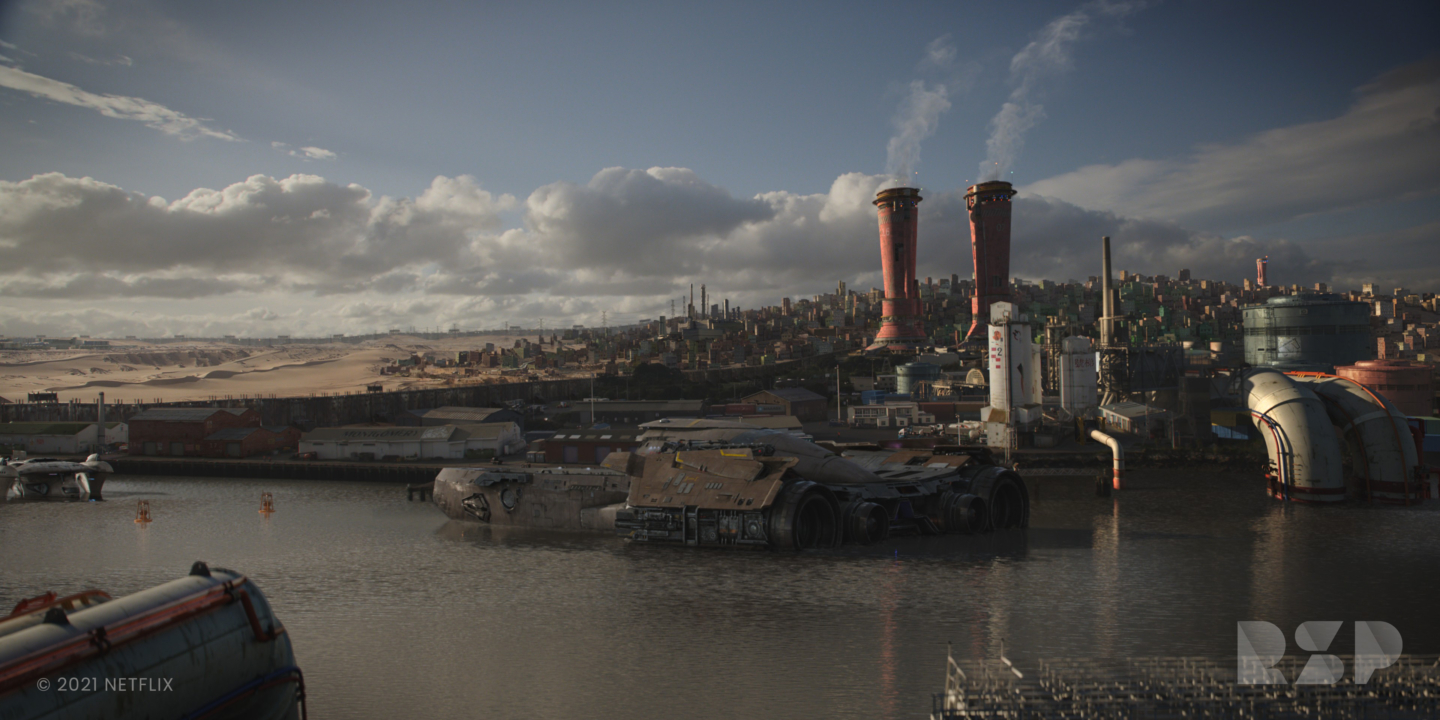
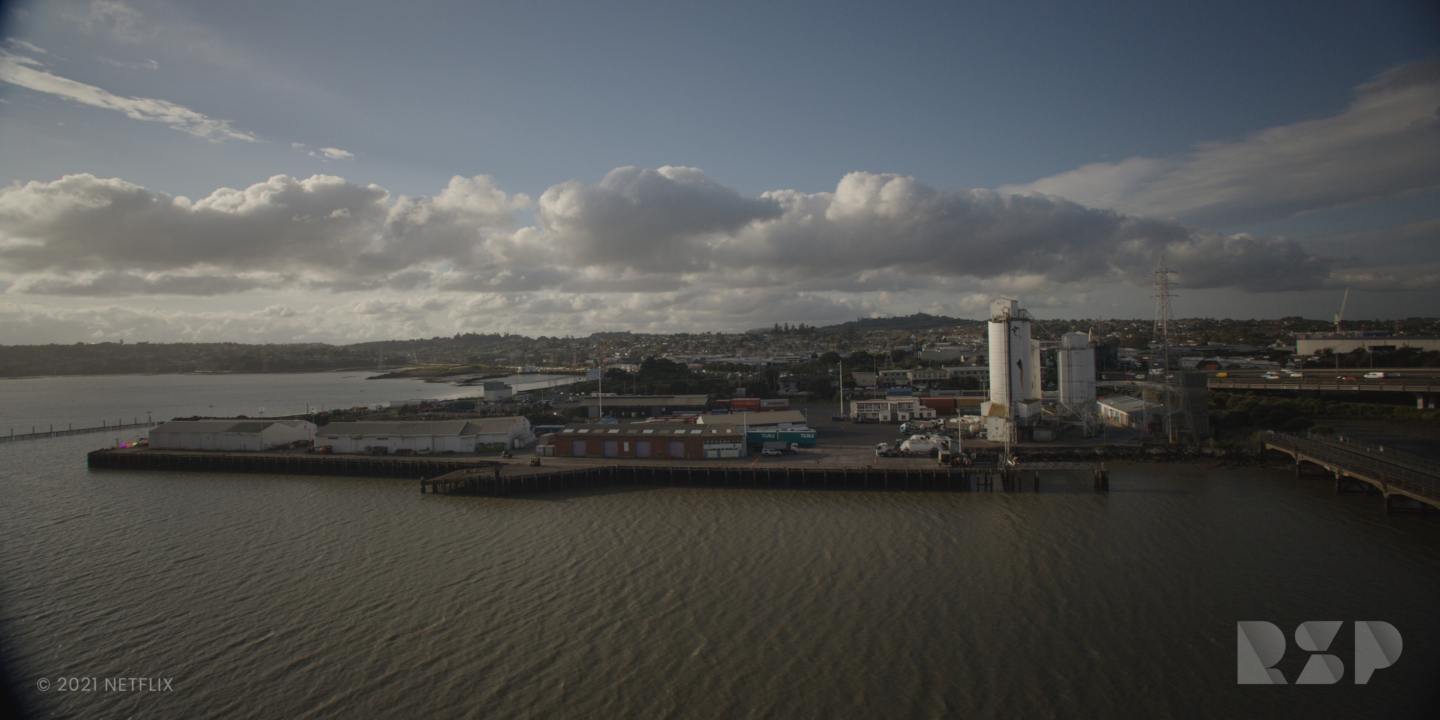
Varisco describes Cowboy Bebop as a labour of love that allowed RSP to apply its touch to a fantastic reimagining of a beloved, modern-day classic. “We were thrilled to be brought on board Netflix’s team and with the freedom the production team gave us to do work our magic,” he says. “They allowed us to present our ideas and run with them. It was an incredible project.”
